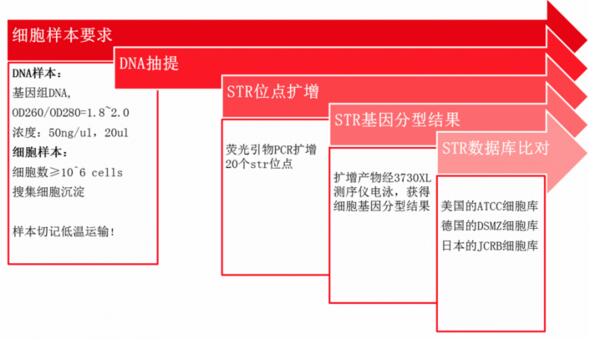

The problem of misidentification of cell lines has a history of 50 years. Based on the analysis data of international cell banks, the misidentification rate of cells was 35% in 1984 and 18% in 1999. Until recent years, cell lines used in the biomedical field required The problem of identification still receives little attention.
In recent years, a large number of studies have shown that the STR genotyping method is one of the most effective and accurate methods for cell cross-contamination and character identification, and the application of STR genotyping in cell identification has been strongly recommended by ATCC and other institutions. The ATCC cell bank in the United States, the DSMZ cell bank in Germany, and the JCRB cell bank in Japan provided the data of each cell line for comparison of STR typing.
Service principle
The STR gene locus is composed of short tandem repeat sequences with a length of 3 to 7 base pairs. These repeat sequences are widely present in the human genome and can be used as highly polymorphic markers. They are called DNA fingerprints of cells. Detection by PCR (polymerase chain reaction). Alleles at STR loci can be distinguished by differences in the copy number of repeat sequences within the amplified region, which can be identified by fluorescence detection after separation by capillary electrophoresis. Then, through a certain calculation method, the obtained STR typing results can be compared with the professional cell STR database to calculate the cell line to which the sample belongs or the name of the possible cross-contaminated cell line.

Service flow

STR cell identification service process
Ordering method
 Service Hotline:4008-750-250 Phone:180-6607-1954
Service Hotline:4008-750-250 Phone:180-6607-1954
 QQ:4008-750-250
QQ:4008-750-250  Mail:sales@reqbio.com
Mail:sales@reqbio.com